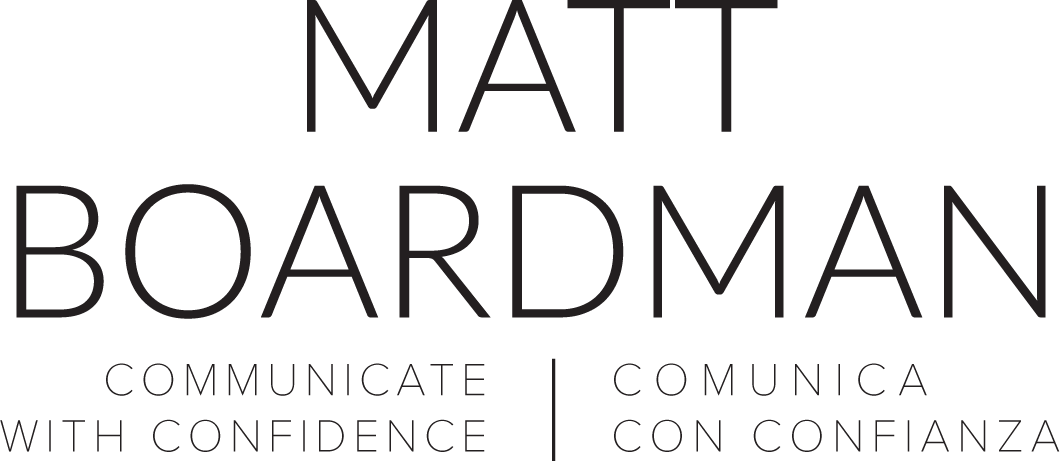Have you ever found it difficult to get someone to open up in conversation? Ever wondered what the other person is really interested in, but not quite managed to get there? Want to know how you can make every conversation memorable by taking control of the questions you use?
Let’s take a typical scenario. You’re at a cocktail party and have been cornered by the father-in-law of an old friend. Ideally, you will not spend the next thirteen minutes engaged in a sterile game of conversational table tennis in which each of you tries fruitlessly to guess where you might have common ground:
You: “So... Do you enjoy reading?”
Father-in-law: “Not particularly. I find it distracting. Do you?”
You: “Yeah, I enjoy it. Do you usually come to Maria’s parties?”
Father-in-law: “Quite often. Depends on the availability of gin.”
Putting aside one participant’s interest in gin, let’s consider what’s going wrong.
Neither person is being obstructive, or refusing to answer the other. The issue is that each is asking the other’s reaction to a specific topic, and thereby reducing the chance that they will stumble across something that genuinely interests the other. It’s a little like trying to find Excalibur like this:
You: “Is it in Lake Superior?”
Merlin: “No”
You: “Is it in Lake Michigan?”
Merlin: “No”
You might get there eventually, but it’s likely to take you a long time and Merlin will get bored more quickly than if you just asked him “Which lake is it in?” (The Enchanted Lake, in case you’re interested). An extreme example, but it points us to the problem: closed questions.
Closed questions
“Do you enjoy reading?” “Do you usually come to Maria’s parties...?” “Is it in Lake Windermere?”
All of these questions will elicit a short reply. Not necessarily “yes” or “no”, but something short, factual and relatively predictable.
Closed questions have their uses. When you first meet someone, closed questions can help to open the conversation in an unthreatening way: “Do you often come to these events?” is a safe first question unlikely to catch anyone off-guard. But in my opinion small talk is rarely satisfying or memorable. A successful conversation usually involves both of the following:
- Each person enjoying it
- Each person making clear that they are enjoying it
I argue that your best chance of each person enjoying the conversation is to find out their real interests.
This could be their lifelong interest in toucan mating patterns or the pressing urgency of their current attempt to buy a flat. Either way, you will find out most easily by asking them open questions.
Open questions
And just what are these powerful weapons for your chat arsenal? Basically, open questions start with the 5 W’s (and 1 awkward H) that your primary school teacher tried to make more interesting by pretending you were a detective investigating a crime:
- “Where were you before you came to the old mill?”
- “What were you doing at the time of the crime?”
- “Why were you carrying the meat cleaver?”
- “Who can vouch for your whereabouts at the time?”
- “When did you first hear a scream?”
- “How would you feel about 18 years in prison?”
Please note: The above example is illustrative only. Unless you are networking at a murder mystery party and think your best chance of making friends is solving the crime, the following example is (slightly) more likely at a party:
- “Where did you go last year?”
- “What made you go to Ecuador?”
- “Why were you first attracted to studying toucans there?”
- “Who inspired you most on the toucan-mating pattern expedition?”
- “When did you witness the Sensual Dance of the Three Plumes?”
- “How would you describe the dance to someone who had never seen it?”
Please note: This last question could lead to an unpredictable physical demonstration and should be used with caution if you’re concerned the other person is more interested in the Sensual Dance of the Three Plumes than their cocktail party reputation.
Each of these gives a large amount of agency to the other person and allows them to steer the conversation to their real interests.
Some people suggest that a good rule of thumb is to ask one open question to every three closed questions. I feel uncomfortable with formulas like this (if only because the image of you standing next to someone’s father-in-law and subtly biro-ing off a tally chart on your wrist makes me want to defenestrate myself), but do whatever helps you.
The key thing to remember is that, whether you’re talking to a friend’s father-in-law, an ancient Arthurian wizard or a toucan-mating world expert, your quickest route to their real interests lies in open questions.

